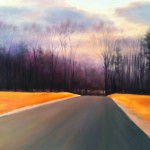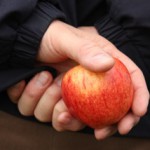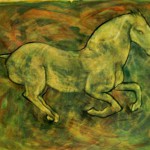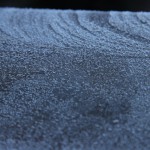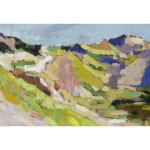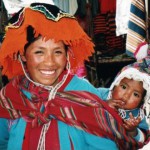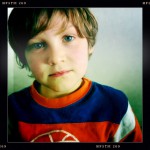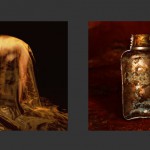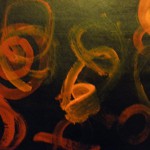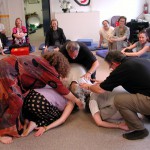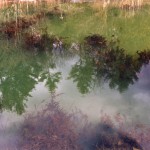Friday
Poetry by Mark Frutkin
A Word from Mark
These poems have not been published previously. They have a particular influence from my experience with meditation and the Shambhala path. I studied poetry with Allen Ginsberg when I attended Naropa Institute in Boulder, Colorado in Summer of 1976, where I also studied with other writers and heard a number of public talks by Chögyam Trungpa, Rinpoche. I have been a Buddhist meditator and a writer since the early 1970s, served as the head of the Ottawa Shambhala Centre for several years, and was appointed as the Warrior of the Centre several years ago. I have taught poetry at numerous locations: Carleton University (Ottawa), Ottawa Shambhala Centre, and Naropa Institute in Halifax. If anyone is interested in contacting me, I can be reached at [email protected]. I hope you enjoy these poems appearing in the Shambhala Times.
Without Emptiness
Without emptiness
there would exist
no spaces between fingers
or toes
leaving us with useless lumps
for hands and feet
Without emptiness
there could be no life,
for the womb
is an empty space
within each female
where life begins
Without the emptiness of space
there would be nowhere for planets
to travel or stars to move,
they would be like stones
stuck in ice,
the hunter Orion would be locked
in a cave, hibernating
with the bear known as Ursa Major
Without emptiness
nothing could happen
because there would be no space
for the poem to arise
for the lungs to breathe.
Without the emptiness of the blank page
the poem could never be written down,
without the silence in the air
the poem could never be heard.
Without emptiness
There would be no life.
Mixing Mind with Space
In meditation we say
we mix our mind with space
Blue sky
Black hole
Deep valley
Hollow mountain
Thoughtless afternoon
Dreamless sleep
Emptied drawer
Empty pocket
Car out of gas
by the side of the road
Dead horse
beside the trail
The non-number zero
A million, billion, trillion zeros
Inner ear
Outer space
Mute man
Blind woman
One minus one
One trillion minus one trillion
Blank page
Invisible ink
Leap freely
from the towering period
at the end of the poem.
Aphorism
The only way to feel
completely grounded
is to fully accept
groundlessness.
Gap
When the breath
goes out and dissolves
there’s a gap
before the next breath
is drawn in –
that gap is called
the bardo of the breath.
White Butterfly
Frantic, chaotic
the flight of the white butterfly
unstuck, unlike the leaf
stuck to its branch, its tree,
unlike the cloud pushed
in a particular direction
by prevailing winds,
unlike the stone
which moves not at all
but simply is worn away
while sinking into earth –
the white butterfly is driven,
unable to make any decision,
a bit of living trash
flicking this way and that
so like our all too
human minds.
Deep Simplicity
In Deep Simplicity
simply breathe.
Breathing in
is the world breathing out,
breathing out is the world
breathing in.
It’s that simple.
The Space that Allows
Sky is simply the space that allows
the arising and passing
of sun, moon, stars,
clouds, all celestial phenomena,
comets, lightning
and the flight of crows,
starlings and eagles,
sky is the space that allows
Eternity is the space that allows
all times: seconds, minutes, hours,
days, weeks, months,
years, lifetimes, centuries
and millennia,
eternity is the space
that allows time
Silence is the space that allows
sound: words in conversation,
songs, trill of warbler,
caw of crow,
crash, lightning, shouts,
wash of sea, trickle of creek,
silence is the space
that allows sound
The human body is the space that allows:
the empty stomach makes room
for the food to sustain life,
the empty mind
allows clarity, imagination
and the arising of new ideas,
the womb is the space that allows
the fertilized egg to grow
into new life
And finally, love is the space that allows
all emotion,
the wide-open heart that accepts
anger, joy, depression,
reconciliation, relief,
elation, happiness,
sadness, patience and empathy,
love is the space
that allows all emotion.
***
Mark Frutkin lives in Ottawa and has published 19 books, including fiction, non-fiction, and four collections of poetry, in Canada, the US, Britain, and in seven foreign translations.
His 2006 novel, Fabrizio’s Return (Knopf), won the Trillium Award and the Sunburst Award, and was a finalist for the Commonwealth Book Prize (Canada/Caribbean). His novel, Atmospheres Apollinaire (Porcupine’s Quill) was a finalist for the GG award for fiction. And finally, two of his collections of poetry have been finalists for the Ottawa Book Award. Further information on his books can be found on his website at www.markfrutkin.com
Mark came to Canada (his mother’s birthplace) as a draft resister in 1970 during the Vietnam War and lived for nine years in western Quebec in a log cabin with no electricity and no running water. Having grown up in Cleveland, Ohio and attended Loyola University in Chicago, his unusual experiences in the Canadian bush sparked his interest in poetry and it was in the cabin where he first started writing. He hopes you enjoy his work.
Entries filed under Arts and Poetry
How Good the World! – HIGHLIGHT
The Road – in progresspaintings offered by Christine Labich, of the Pioneer Valley Shambhala Center Christine Labich has been gazing at, studying, and tending to the natural world for her lifetime, beginning with her childhood on a pioneering organic farm in New Hampshire. She studied ecology and ... continuePosted August 11, 2012 by
Integrating Head & Heart – HIGHLIGHT
by Brandon Rennels, from The Under 35 Project A year ago I was sitting at a cafe in Ann Arbor, enjoying breakfast with a beloved professor from university. When I was in school he taught a course entitled Psychology of Consciousness, which was one my first introductions ... continuePosted August 8, 2012 by
Windhorse in Paint – HIGHLIGHT
THE GIANT “Le colosse” acrylic on paper (45″X76″)paintings by Marjolaine Robert, www.marjolainerobert.com Here are four photos of my last paintings. The exhibit is called CHEVAL DU VENT (Windhorse) and I have 21 of “my horses” for that exhibit. With this exhibit, I present the principle of windhorse ... continuePosted August 5, 2012 by
Hustle Meditation – HIGHLIGHT
by Caitlin Bargenquast, from The Under 35 Project “Longing to attain complete enlightenment for the sake of others is what is meant by arousing bodhicitta.” ~Maitreya, “Abhisamayalankara” hus·tle |’hǝsǝl| non-adverb 1.[trans.] [intrans.] the choiceless choice, flow, do nothing and everything is done: Somewhere, and then somewhere again, in the midst of ... continuePosted August 1, 2012 by
Tasting the Salty Air – HIGHLIGHT
Provincetown Dunes Sunrisearticle and paintings by Amy Wynne-Derry Nature has always been my greatest teacher. Growing up on Outer Cape Cod, in Massachusetts shaped my perception of how the world visually and temporally evolves. I spent hours as a child walking Ballston Beach in Truro, a feverish beachcomber, ... continuePosted July 29, 2012 by
Snapshots of Basic Goodness: July – HIGHLIGHT
This regular posting features snapshots of basic goodness as seen out in the world, on the street, in the countryside, in another country, at work, home, garden or grocery store. (Click on each image to view larger.) Woman and child in market in the Valle Sagrada, Sacred Valley, ... continuePosted July 8, 2012 by
Hopeless – a solo performance on Nowness and Letting Go
For two weekends only! Come see the award winning one-woman show inspired by the writings of Pema Chodron. ‘Hopeless’ An uplifting collection of stories, music and musings on the nature of hope, fear and finding joy, “Hopeless,” performed by Portland Sangha member Melanya Helene, is a one-woman ... continuePosted June 14, 2012 by
Snapshots of Basic Goodness: June – HIGHLIGHT
This regular posting features snapshots of basic goodness as seen out in the world, on the street, in the countryside, in another country, at work, home, garden or grocery store. (Click on each image to view larger.) continuePosted June 10, 2012 by
Basic Goodness in photos
Runners-up in this month’s submissions to the Snapshots of Basic Goodness series. [caption id=”attachment_31019″ align=”aligncenter” width=”470″ /> View more at: continuePosted May 12, 2012 by
Snapshots of Basic Goodness: May – HIGHLIGHT
New Regular Feature on the Shambhala Times: Snapshots of Basic Goodness This new regular posting will feature snapshots of basic goodness as seen out in the world, on the street, in the countryside, at work, home, grocery store. We invite YOU, our readers, to contribute. See a moment ... continuePosted May 12, 2012 by
Union of Dharma and Art – HIGHLIGHT
photos and article by Dana Marshall In my last year of high school in Boulder, Colorado (1978), at 16 years old I had completed all the required courses so I had the opportunity to focus on what really interested me which was painting, photography, ceramics and mythology. ... continuePosted May 7, 2012 by
A Mukpo Painting – HIGHLIGHT
For those that don’t know him, Tagtrug Mukpo, affectionately known as Taggie, was born in Boulder, Colorado on March 9, 1971 to Chogyam Trungpa Rinpoche and his wife, Lady Diana Mukpo. He is half-brother to Sakyong Mipham Rinpoche, Chogyam Trungpa’s eldest son. As a young child, ... continuePosted March 28, 2012 by
Awakening Playfully – HIGHLIGHT
Celebrating Shambhala and the Arts Offering a window into the Shambhala Art teachings article by Ladan Yalzadeh photos from Shambhala Art International Awakening. That’s the word I would use to describe the Shambhala Art teachings. Here are some other words I would use: bold, surprising, gentle, accessible, primordial, expansive, essential, ... continuePosted March 26, 2012 by
Rendezvous with Impermanence – HIGHLIGHT
Celebrating Shambhala and the Arts Two artists – Massimo Guerrera and Sylvie Cotton – share their creative process and expression with us. Both are Shambhala practitioners and long-time trained artists. Their art is inspired by their practice of meditation and the path of embodying creativity. In these two ... continuePosted March 23, 2012 by
Sometimes a golden fish swims by – HIGHLIGHT
Celebrating Shambhala and the Arts What to Know and How to Know It photos and article by Mary Lang “Sit and do nothing. Every once in a while a golden fish swims by and lays her golden eggs. You’ll know.” ~ Chogyam Trungpa Rinpoche In the fall of 1973, I started ... continuePosted March 22, 2012 by
![]() RSS feed for the Arts and Poetry category
RSS feed for the Arts and Poetry category
View all posts from authors in Arts and Poetry: jillian_johnson



